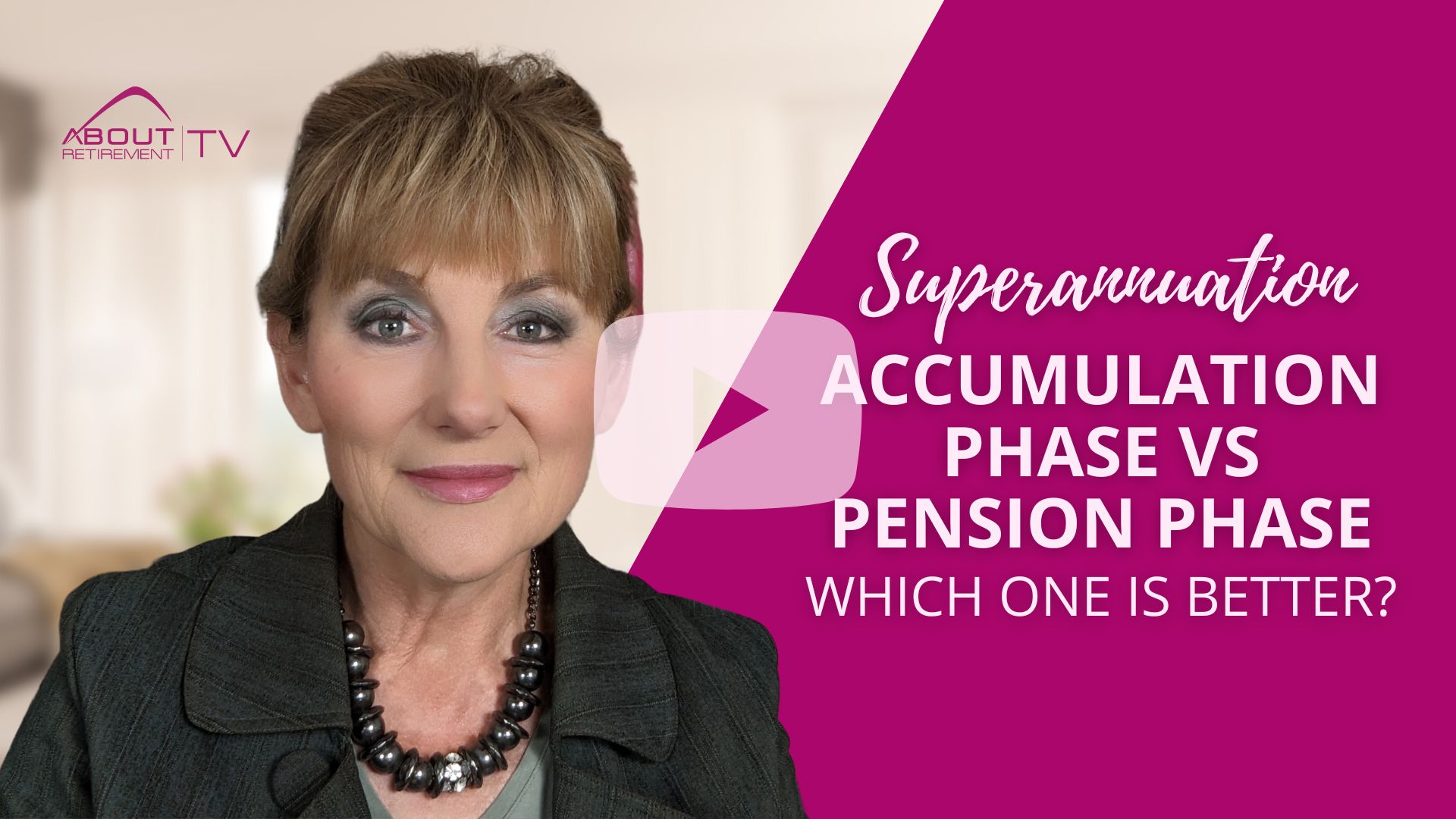
Accumulation and Pension Phase of superannuation
I have been receiving many questions regarding the topic of superannuation, such as:
– types of contributions and benefits of one over the other – you can find lots of information right here:
1. 4 reasons to make personal tax-deductible super contributions – that explains what concessional contributions are
2. Downsizer Contribution to Super – Who can benefit – non-concessional contribution when selling family home and contributing money to you super fund
3. Reduce tax through super. How much can you contribute to super? – further explanation of concessional contributions
4. Superannuation bring-forward contribution – another example of non-concessional contributions.
So, as you can see there is a verity of super contributions, but we need to know when one is better than the other. This is my plan for our future videos, that was requested by many, not knowing why use one in one situation and the other type of contribution in another situation. This is a great suggestion and request.
But before we get to the nitty-gritty about contributions, first we should understand superannuation as a product and a difference between the accumulation and a pension phase of the superannuation cycle.
So today we are comparing the accumulation phase and a pension phase, what’s the difference and why and which one is better and why.
· Accumulation phase
This is the stage when all the money is being collected via different types of contributions:
- Employer SCG, which currently is 10.5% of your gross wage, increasing by 0.5% annually to 12% by 2025.
- Salary sacrifice
- Personal concessional contributions when you claim tax deduction or
- Personal non-concessional contributions, when you contribute the after tax money to your super account.
All contributions outside of non-concessional will be subject to what is called concessional contribution tax, which is 15% and non-concessional are not subject to any entry tax.
All those contributed money accumulate in your super, hence the name of the accumulation phase, and your money is invested in some form of investments chosen by you or by the super fund if you choose the default option.
Money can be invested in shares and earn dividends.
It can be invested in property, and then it earns rental income.
It can be invested in cash, term deposits, mortgage funds, bonds and earn some kind of the interest return.
Or you could decide to invest your money in a mixed fund, which we all know as balanced funds, conservative funds or growth funds.
Most types of investments will pay some form of an income, as I’ve listed above, and then income is subject to tax of up to a maximum 15%.
If your investments grow in a capital value, and then it gets sold, it might be subject to CGT, providing it has been held longer than 12 months. The rate of CGT in super is up to 10%.
So as you can see, there if a definite tax savings in superannuation income tax and a CGT tax when comparing the tax paid at your personal MTR.
This is a beauty of savings within the superannuation environment.
If you have a SMSF you might hold a rental property or a commercial property.
If you do, then your rental income will be subject to a max 15% tax and CG up to 10% if you sell the property after holding it for 12 months or longer.
Thing that most people are surprised with is the fact that: there is no limit how much you can accumulate in super, and you can hold the money in super for as long as you like.
Labor however is now trying to introduce a new superannuation tax for funds with balances over $5mil. You can find out all the details in the article “New Super tax – Yes or No?”
Also, there is no rule as to the number of super funds you can have, which is a surprise for some.
The government has been advertising the idea of consolidating super accounts into one, as a way to reduce your superannuation costs. Well sometimes this is correct, often times it is not.
I often will use couple of superannuation accounts for estate planning and tax planning purposes, but neither the government, nor your industry super fund will tell you this, purely from the point of view of self preservation and self-interest.
The sad part is, that it works, the government will end up with greater taxes being collected from you, while industry super funds made a huge marketing killing advertising “how to save on super fees” and getting a big market share of your superannuation savings, taking your attention away from the real issue, which is how to maximise your super savings, minimise taxes legally and secure your savings for the next generation in case of your early passing.
It is only when people approach retirement, when they start paying attention to their money and start setting up their super savings and other assets correctly, often with the advice and assistance of a financial planner.
· Pension phase
After the whole life of work and savings, there is a time when you want to retire, either fully or partially, and you need to commence an income stream, and start drawing some income from your super savings.
This is when you start the pension phase.
You can transfer your super to a pension in full or just part of your super balance. You are not forced to close down your super account, just because you need some income from your savings.
But in order to transfer funds from super to a pension, so to rollover savings from a superannuation account to a pension account, you have to meet conditions of release. And most common are either retirement from employment if you reach your preservation age or reaching the age of 65.
Pension funds require you to draw at least the minimum income that has been prescribed by the legislation that is based on your age, so it could be 4%, 5%, 6 % or more if you are older. The older you get, the bigger the chunk of money that you have to receive from your super.
But this is the time when the financial magic happens:
- pension funds do not pay any income tax, therefore all your dividends, interest, rental income is coming to you at NIL tax
- If your investments grow in value, and are sold at some stage, there are not CGT consequences
- Income that you receive in your bank account, so your pension payments are not taxed in your hands, therefore not subject to your personal Income Tax
This is the most beautiful time for your savings that are generally not subject to any type of tax, unless you have an untaxed element within your fund, which exists only in old style defined benefit pensions.
What’s more, if you receive any income from Australian shares as fully franked dividends, this is like financial heaven opens for you when all franking credits are being fully refunded to your super fund. I cannot believe why more retirees are not utilising Aussie shares for their financial advantage. But this is a subject for another video.
Going back to the level of income that is prescribed based on your age.
Some retirees are getting upset to be forced to be drawing that level of income, if they don’t need it.
Please understand that super funds and pension funds have been designed to support you for your life expectancy, they are not tax-effective financial vehicles for keeping savings so you can keep money for your beneficiaries in a concessionally taxed environment.
Therefore, the income level has also been design in such a way, that you are supposed to use up your superannuation savings during your lifetime.
But please remember, just because income has been paid out to you, if this is too much, there is no law that says you have to spend it. Reinvest money in other financial vehicles, or even re-invest into super if you can. This is where a smart money planning comes into play.
Another option is to transfer to an account-based pension or other form of a retirement income stream only a portion of your superannuation balance. Nobody says you have to move all your money out of your super account.
But if you are unsure of the best ways to do maximise your benefits, just get a professional advice. You can always reach out to our office, organise a meeting with me and understand your options.
By: Katherine Isbrandt CFP®
Money Strategist & Retirement Planner
Principal of About Retirement






